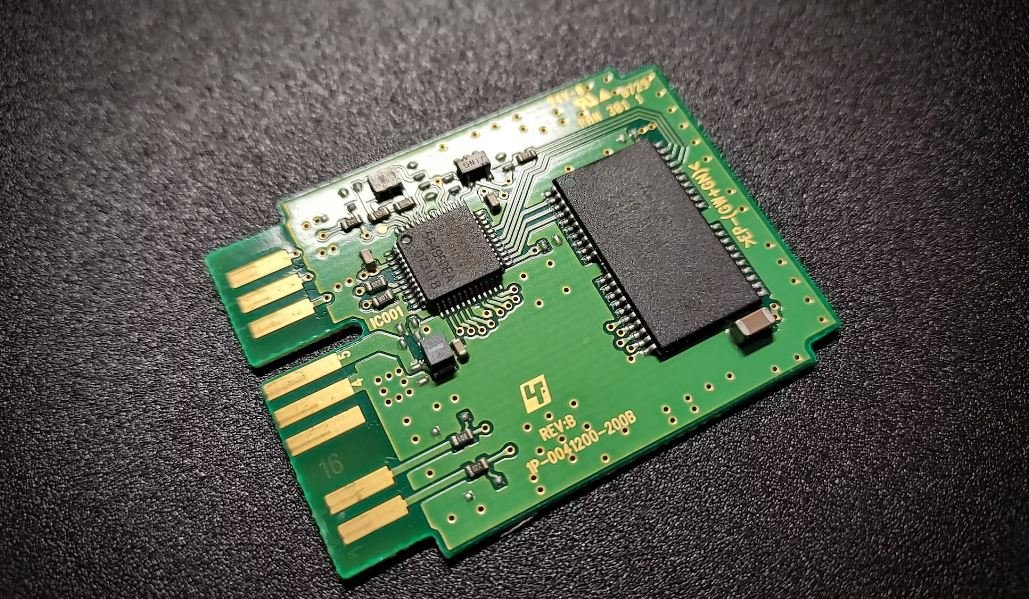Gradient Descent Is an Algorithm
Gradient descent is a popular optimization algorithm commonly used in machine learning and data science applications. It is used to minimize a given error function, or cost function, by iteratively adjusting the parameters of a model. This article provides an overview of gradient descent and its key components.
Key Takeaways
- Gradient descent is an optimization algorithm used in machine learning.
- It iteratively adjusts model parameters to minimize a cost function.
- Gradient descent can be applied in various domains, such as linear regression and neural networks.
How Gradient Descent Works
In gradient descent, the algorithm starts with an initial set of parameter values and computes the gradient of the cost function with respect to these parameters. The gradient indicates the direction of steepest ascent, which is the direction of the greatest increase in the cost function. The algorithm then takes small steps in the opposite direction of the gradient to descend down the cost function’s surface. This process is repeated until convergence, meaning the algorithm finds the optimal parameter values that minimize the cost function.
*Gradient descent updates the parameters by descending in the opposite direction of the gradient, thereby minimizing the cost function.*
Types of Gradient Descent
There are three main variations of gradient descent:
- Batch Gradient Descent: Updates the parameters using the gradients of the entire training dataset.
- Stochastic Gradient Descent (SGD): Randomly samples individual training instances to update the parameters.
- Mini-Batch Gradient Descent: Updates the parameters using a subset, or mini-batch, of the training dataset.
Table 1: Comparing Gradient Descent Variants
| Algorithm | Advantages | Disadvantages |
|---|---|---|
| Batch Gradient Descent | Guaranteed convergence. | Slow on large datasets. |
| Stochastic Gradient Descent | Fast and memory-efficient. | May never converge exactly. |
| Mini-Batch Gradient Descent | Balances convergence speed and computational efficiency. | Requires tuning of mini-batch size. |
Applications of Gradient Descent
Gradient descent is widely used in various machine learning algorithms and applications, including:
- Linear regression
- Logistic regression
- Artificial neural networks
- Support vector machines
- Deep learning
*Gradient descent enables the optimization of complex models to fit large and high-dimensional datasets.*
Table 2: Gradient Descent Application in Different Models
| Model | Cost Function | Optimization Algorithm |
|---|---|---|
| Linear Regression | Mean Squared Error (MSE) | Batch Gradient Descent |
| Logistic Regression | Binary Cross-Entropy Loss | Stochastic Gradient Descent |
| Neural Networks | Categorical Cross-Entropy Loss | Mini-Batch Gradient Descent |
Optimizing Gradient Descent
There are several techniques and variations to improve gradient descent‘s performance:
- Learning Rate: Adjusting the step size in each iteration to avoid overshooting or getting stuck in local optima.
- Momentum: Adding a momentum term to the update rule to accelerate convergence.
- Regularization: Introducing penalties to the cost function to prevent overfitting and improve generalization.
Table 3: Performance Optimization Techniques for Gradient Descent
| Technique | Description | Advantages |
|---|---|---|
| Learning Rate Decay | Gradually decreasing the learning rate over time. | Improves convergence speed. |
| Nesterov Accelerated Gradient (NAG) | Uses an advanced momentum method to improve convergence around a local minimum. | Effective on complex optimization problems. |
| L1 and L2 Regularization | Controls model complexity and prevents overfitting. | Improves generalization and model performance. |
Gradient Descent: An Essential Optimization Algorithm
Gradient descent is a versatile algorithm that plays a fundamental role in optimizing machine learning models. Its iterative nature and ability to adapt parameters make it a powerful tool for minimizing cost functions. By understanding gradient descent, you can further enhance your understanding of optimization techniques in the field of machine learning.

Common Misconceptions
Gradient Descent Is an Algorithm
One common misconception about gradient descent is that it is an algorithm. While gradient descent is indeed an optimization algorithm commonly used in machine learning, it is not an algorithm in the traditional sense. Rather, it is a mathematical technique used to find the minimum of a function by iteratively adjusting the parameters. It is not a step-by-step procedure with a fixed set of instructions.
- Gradient descent is not a deterministic algorithm.
- It is not the only optimization method used in machine learning.
- It is a tool that is applicable to a wide range of optimization problems, not just specific to machine learning.
Gradient Descent Always Converges to the Global Minimum
Another misconception is that gradient descent always converges to the global minimum of a function. In reality, gradient descent can often get stuck in local minima or saddle points which are not the global minimum. These local optima can pose challenges in obtaining the best possible solution using gradient descent.
- Stochastic gradient descent is particularly prone to getting stuck in local optima.
- Techniques like momentum, learning rate schedules, and random restarts can help mitigate local optima issues.
- Applying gradient descent with different initial parameter values can help explore different areas of the function and potentially find a better solution.
Gradient Descent Requires a Differentiable Objective Function
Many people think that gradient descent can only be applied to functions that are differentiable. While gradient descent is often used with differentiable objective functions, there are variants like subgradient descent and stochastic gradient descent which can handle non-differentiable objective functions.
- Subgradient descent can be used when there are non-differentiable points in the objective function.
- Stochastic gradient descent can be applied to non-differentiable functions by using subgradients at random sample points.
- These variants may have different convergence properties compared to traditional gradient descent.
Gradient Descent Does Not Require a Fixed Learning Rate
Some individuals believe that gradient descent always utilizes a fixed learning rate. This is not the case, as there are variations of gradient descent that incorporate adaptive learning rates to improve convergence and performance.
- Adaptive learning rate methods like AdaGrad, RMSprop, and Adam adjust the learning rate based on the gradient information.
- These adaptive methods can help speed up convergence and prevent overshooting the minimum.
- Choosing an appropriate learning rate decay strategy can also be important for improving performance over the course of training.
Gradient Descent Is Only Applicable to Supervised Learning
Another misconception is that gradient descent is only applicable to supervised learning problems where there is a labeled dataset. While gradient descent is commonly used in supervised learning, it can also be applied to unsupervised learning tasks such as clustering, dimensionality reduction, and generative models.
- In unsupervised learning, gradient descent is often used to optimize objective functions like clustering distances or reconstruction errors.
- Unsupervised learning variants of gradient descent, such as the K-means algorithm, are widely used in practice.
- Gradient descent is a versatile optimization method applicable to a wide range of machine learning problems.

Overview of Gradient Descent Algorithm
The gradient descent algorithm is widely used in machine learning and optimization problems. It is an iterative method that aims to find the minimum of a function by iteratively adjusting its parameters. The following tables provide various aspects and demonstrations related to the algorithm.
Applications of Gradient Descent Algorithm
Gradient descent finds numerous applications in different domains. The table below highlights a few notable applications:
| Domain | Application |
|——————–|————————|
| Machine Learning | Training a neural network to classify images |
| Economics | Estimating demand elasticity to optimize pricing strategy |
| Medicine | Calculating dosage amounts for personalized treatment plans |
| Transportation | Route optimization for delivery services |
| Energy Optimization| Determining the optimal settings for a wind turbine |
Comparison of Gradient Descent Algorithms
Various variants of the gradient descent algorithm exist, each with its own characteristics and advantages. The table below compares some commonly used gradient descent algorithms:
| Algorithm Name | Speed | Memory Usage | Robustness |
|———————|—————————–|—————————–|—————————|
| Batch Gradient Descent | Moderate | Low | Sensitive to outliers |
| Stochastic Gradient Descent | Fast | Low | Prone to parameter oscillation |
| Mini-batch Gradient Descent | Balanced | Moderate | Reduces effects of noisy data |
| Momentum Descent | Faster with momentum | Higher for momentum accumulation | Enhanced for noisy data and flat regions |
| Adagrad | Slow for sparse data | High due to history accumulation | Adapts learning rates based on parameters |
| Adam | Fast | Moderate | Robust to variations in hyperparameters |
Types of Gradient Descent
Based on the characteristics and features of the optimization problem, different types of gradient descent algorithms can be employed. The table below presents various types of gradient descent along with their applications:
| Type | Description | Application |
|————————|—————————————|—————————————|
| Vanilla Gradient Descent | Basic gradient descent algorithm | Linear regression |
| Stochastic Gradient Descent | Calculating gradients on a subset of data | Large-scale datasets |
| Batch Gradient Descent | Considering all training examples together | Small training datasets |
| Mini-batch Gradient Descent | Computing gradients using small subsets of data | Neural network training |
| Conjugate Gradient Descent | Minimizing quadratic functions | Quadratic optimization problems |
Learning Rates for Gradient Descent
The choice of learning rate significantly impacts the performance and convergence of the gradient descent algorithm. The table below showcases the effects of different learning rates:
| Learning Rate | Effect on Convergence | Effect on Training Time |
|———————|———————————-|—————————————|
| Too High | Oscillation; divergence | Faster, but might fail to converge |
| Too Low | Extremely slow convergence | Slower due to many iterations |
| Optimal | Smooth convergence; stable | Balances convergence and training time |
| Adaptive | Adjusts automatically based on progress | Varies depending on algorithm |
Gradient Descent Techniques
Several techniques complement the gradient descent algorithm to improve its performance. The following table describes additional techniques used in combination with gradient descent:
| Technique | Description |
|————————|—————————————|
| Momentum | Accumulates velocity for faster convergence |
| Nesterov Accelerated Gradient (NAG) | Preserves momentum while considering future position |
| Ridge Regression | Adds a regularization term to prevent overfitting |
| L1 Regularization (Lasso) | Adds an L1 penalty term for sparse feature selection |
| Learning Rate Decay | Decreases the learning rate over iterations |
Convergence Criteria for Gradient Descent
To determine when to stop the optimization process, various convergence criteria are employed in gradient descent algorithms. The table below presents different criteria:
| Criteria | Description |
|————————|—————————————|
| Minimum Gradient | Stops when the norm of the gradient vector is below a threshold |
| Maximum Iterations | Terminates after reaching a specified number of iterations |
| Precision | Considers convergence when the difference between consecutive losses is minimal |
| Objective Function Value | Stops when the objective function value reaches a predefined threshold |
| Change in Variables | Terminates when the change in parameters between consecutive iterations is minimal |
Challenges of Gradient Descent
The gradient descent algorithm, despite its usefulness, also comes with certain challenges. The following table highlights some of these challenges:
| Challenge | Description |
|————————|—————————————|
| Local Minima | Risk of converging to suboptimal local minima instead of the global minimum |
| Saddle Points | Can get trapped in saddle points, resulting in slow convergence or stagnation |
| Learning Rate Selection | Choosing an appropriate learning rate that balances convergence and speed |
| Curse of Dimensionality | Diminishing returns as the number of dimensions increases |
| Non-Convex Functions | Difficulty in optimization when the objective function is non-convex |
Conclusion
The gradient descent algorithm is an essential technique used in machine learning and optimization. Through various applications, types, and techniques, it enables the search for optimal solutions in complex problem domains. However, challenges such as local minima, saddle points, and the curse of dimensionality must be considered. Careful selection of learning rates, convergence criteria, and the use of appropriate techniques enhance the algorithm’s performance. Consequently, scientists and researchers continue to explore novel approaches and improvements to gradient descent, expanding its application in diverse areas.
Frequently Asked Questions
What is Gradient Descent?
Gradient descent is an iterative optimization algorithm commonly used in machine learning and optimization problems. It aims to minimize a cost function by iteratively adjusting the parameters in the direction of steepest descent.
How does Gradient Descent work?
Gradient descent works by calculating the gradient of the cost function with respect to the parameters. It then updates the parameters by taking small steps in the opposite direction of the gradient to minimize the cost function.
What is the cost function in Gradient Descent?
The cost function in gradient descent is a measure of how well the model’s predictions match the actual data. It quantifies the error or loss of the model. The goal of gradient descent is to find the set of parameters that minimizes the cost function.
What are the advantages of Gradient Descent?
Gradient descent is a widely used optimization algorithm due to its simplicity and efficiency. It can be applied to a wide range of optimization problems and scales well for large datasets. It also allows for parallel computation, making it suitable for distributed computing.
Are there different variants of Gradient Descent?
Yes, there are different variants of gradient descent such as batch gradient descent, stochastic gradient descent, and mini-batch gradient descent. These variants differ in the way they update the parameters and the amount of data used in each iteration.
What is batch gradient descent?
Batch gradient descent computes the gradient of the cost function using the entire training set. This means that it requires processing the entire training set in each iteration, making it computationally expensive for large datasets. However, it guarantees convergence to the global minimum of the cost function.
What is stochastic gradient descent?
Stochastic gradient descent updates the parameters based on the gradient computed from a single training example at each iteration. This makes it computationally efficient as it only processes one data point at a time. However, it may result in a noisy convergence path and could potentially converge to a local minimum instead of the global one.
What is mini-batch gradient descent?
Mini-batch gradient descent is a compromise between batch gradient descent and stochastic gradient descent. It updates the parameters using a small subset of the training data called a mini-batch. This balances the computational efficiency of stochastic gradient descent with improved convergence compared to pure stochastic gradient descent.
How do I choose the learning rate for Gradient Descent?
Choosing an appropriate learning rate is crucial for the convergence of gradient descent. Too large of a learning rate may result in overshooting the minimum, while too small of a learning rate could lead to slow convergence. It is typically chosen through experimentation and cross-validation.
Can Gradient Descent get stuck in local minima?
Yes, gradient descent can potentially get stuck in local minima, especially with non-convex cost functions. This means that the algorithm finds a set of parameters that minimize the cost function but may not be the global minimum. Techniques such as random restarts or using different initialization points may help mitigate this issue.




